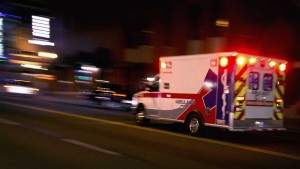
How E911 Connects VoIP Callers with Emergency Services
In November 1967, the FCC met with AT&T to find a means of establishing a universal emergency number that could be implemented quickly. The digits 9-1-1 were selected as the emergency code throughout the United States. The three-digit telephone number quickly connects callers to a Public Safety Answering Point (PSAP), from which the appropriate services are dispatched. Enhanced 911 or E911 service is a feature of the 911 emergency-calling system that automatically associates a physical address with the calling party’s telephone number, giving responders accurate information about where emergency services may be needed.
There are three distinct types of telephone service carriers, traditional land-lines, wireless and VoIP. Enhanced 911 works differently in each case.
Land-lines
All land-line service providers enter their customer’s addresses into an automatic location identification (ALI) database, which is keyed by the telephone number. The information is validated against a street address guide that includes all known address served by each Public Safety Answering Point. When a call comes in, a selective router connects it to the correct PSAP and queries the database with the caller’s phone number to determine the location from which the call was placed and display the address to the 911 dispatcher.
Wireless
Determining the location of a wireless caller is not as straightforward because the phone number and the location are not necessarily related. To locate a mobile telephone geographically, there are two general approaches. One is to use some form of radiolocation from the cellular network; the other is to use a Global Positioning System receiver built into the phone itself. When a call is sent to the Public Safety Answering Point, it passes through a mobile positioning center, which gets the cell and sector ID from the wireless carrier and then decides where to send the call.
VoIP
Because VoIP services can be used from any internet connection, anywhere, they create a challenge in determining the location from which a 911 call has been placed. To address this, SIP.us offers ‘Nomadic’ e911 service that lets customers set any physical address in the United States as the address to be transmitted on 911 calls. This ensures that calls to 911 are routed to the closest Public Safety Answering Point. That address also appears on the emergency services operator’s screen when the call is placed. The address can be updated at any time online in our control panel.
A next generation e911 system is currently being deployed. It will make it possible to transfer calls from one public service answering point to another and help ensure that no 911 call goes unanswered even in the event of a significant disaster. It will also enable access to more data including building floor plans and health information.


